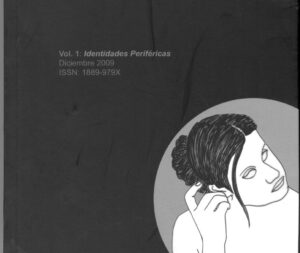Zubiaga, A. y Cilleruelo, L. (2009). Juventud-melancolía: Acerca de la identidad y sus límites. En Arte y Políticas de Identidad, vol.1, (diciembre), pp.65-86.
ISSN edición impresa: 1989-8452. ISSN edición web: 1889-979X
ISSN edición impresa: 1989-8452. ISSN edición web: 1889-979X

Abstract
Beyond our identity card, what we call identity has to do with what make us recognize others and be recognized, thus it relates to what make us be distinctive and remembered. There are those who want to be remembered in their individuality and those who are happy to form part of a collective identity. Many are called but few are chosen, and the chosen will be because of those called, by natural law, in a cycle of eternal recurrence. Why do we need to be recognized, individually as well as collectively? The answer to this question could be found in some type of evolutionary design, since it is possible to trace widely that pulse towards individual or group hegemony throughout the whole biological sphere.
We could then wonder why, for example, contrary to bees and probably the rest of other social animals, we are not satisfied with that immediate recognition between the I and the you, that is to say, the We, here and now, and nevertheless, we claim the past and project the future as legitimizing instances of our feelings of identity. We build beautiful and seductive stories about what we were and what we will be able to become, stories that constitute the most potent potion, the most captivating pheromone ever in existence. That segregating, and specifically human, code, reached its most exquisite perfection possibly when human beings learned to compose songs with lyrics. Feelings with memory. Songs to love, songs to work, songs to fight. Definitively, songs to unite and to disunite: the new means offer us the most crowded agora we could have ever imagined to sing our desire from the rooftops. That our wish becomes a reality is a more and more questionable aspiration.
Key words
identity, new media, reality, simulacrum.